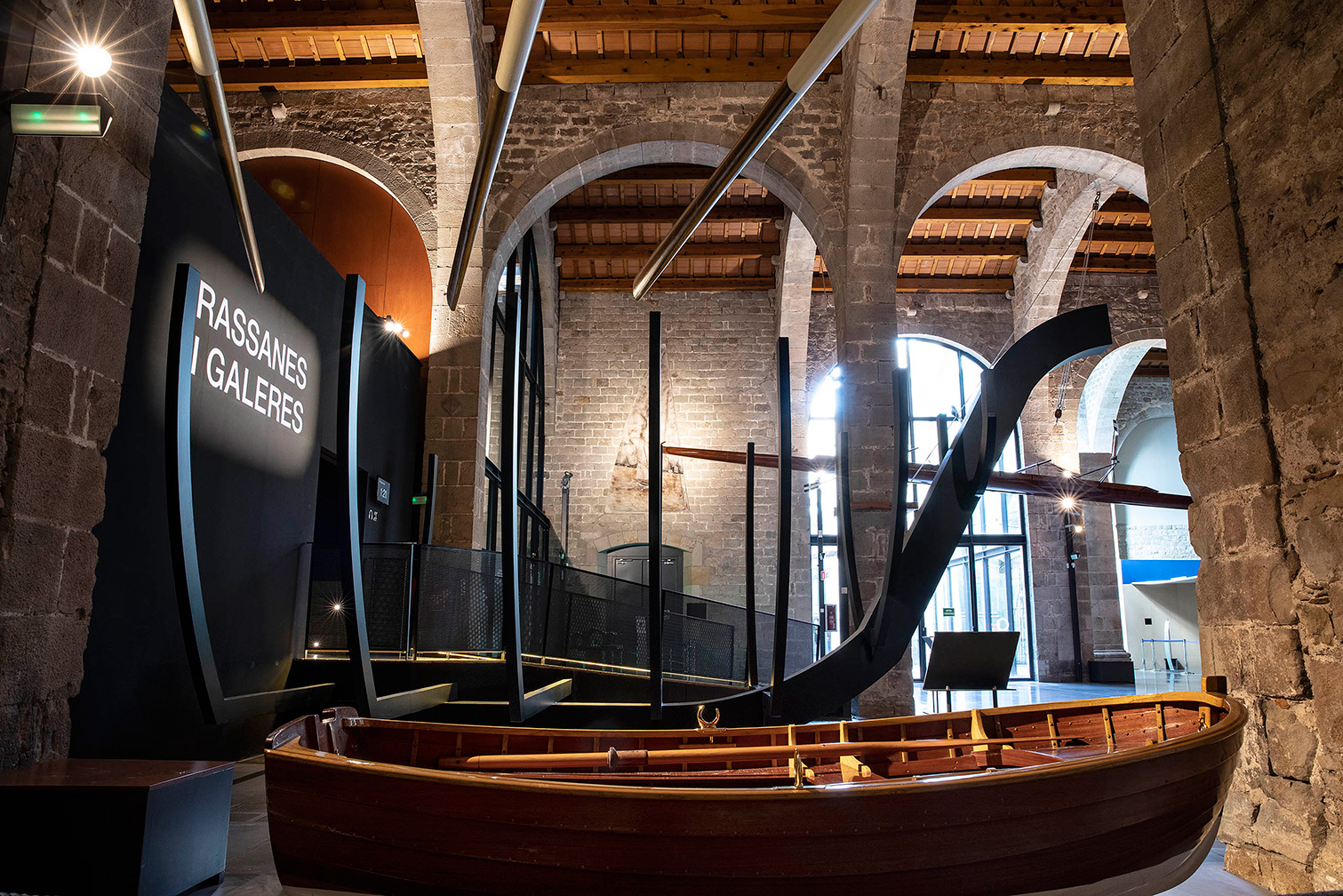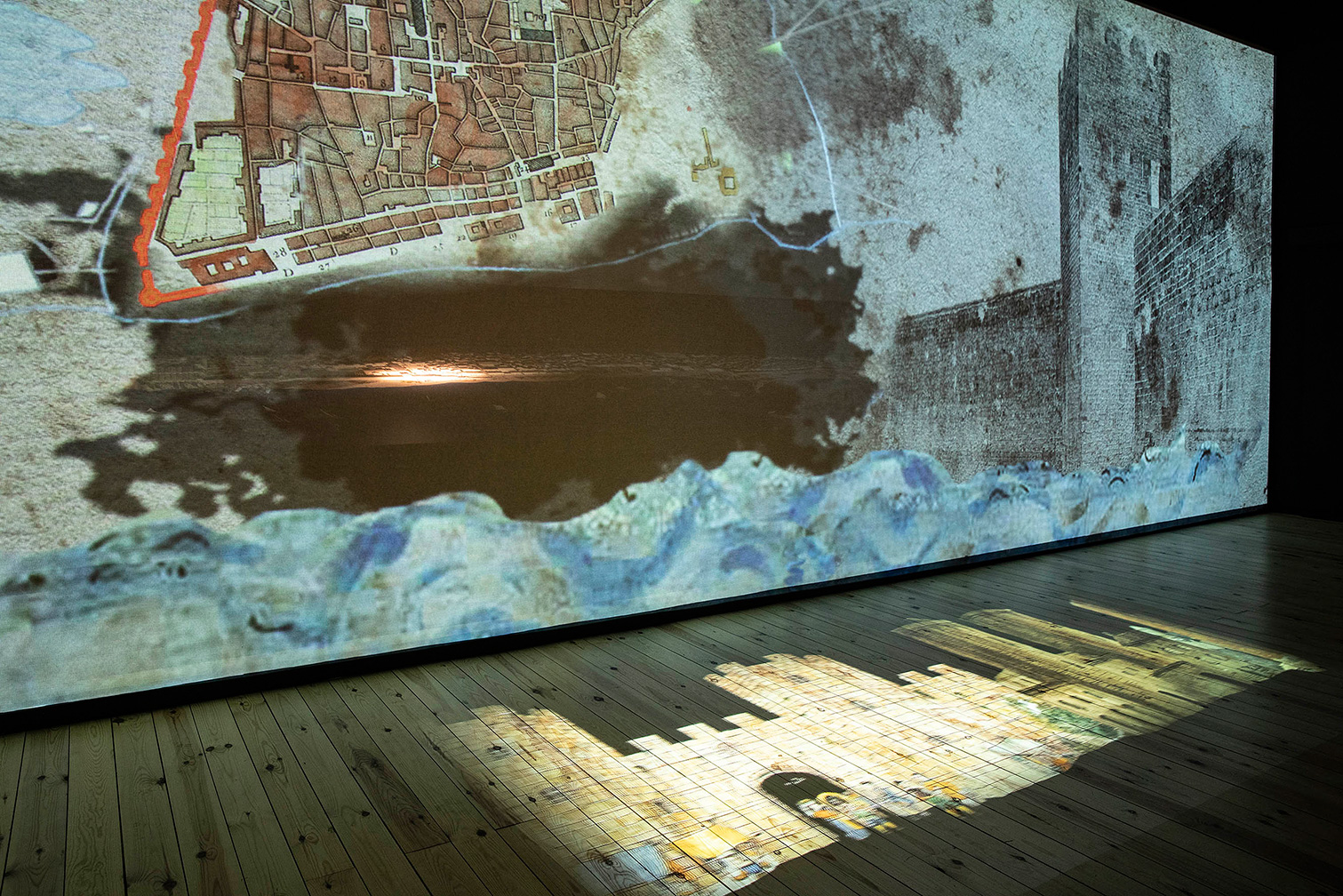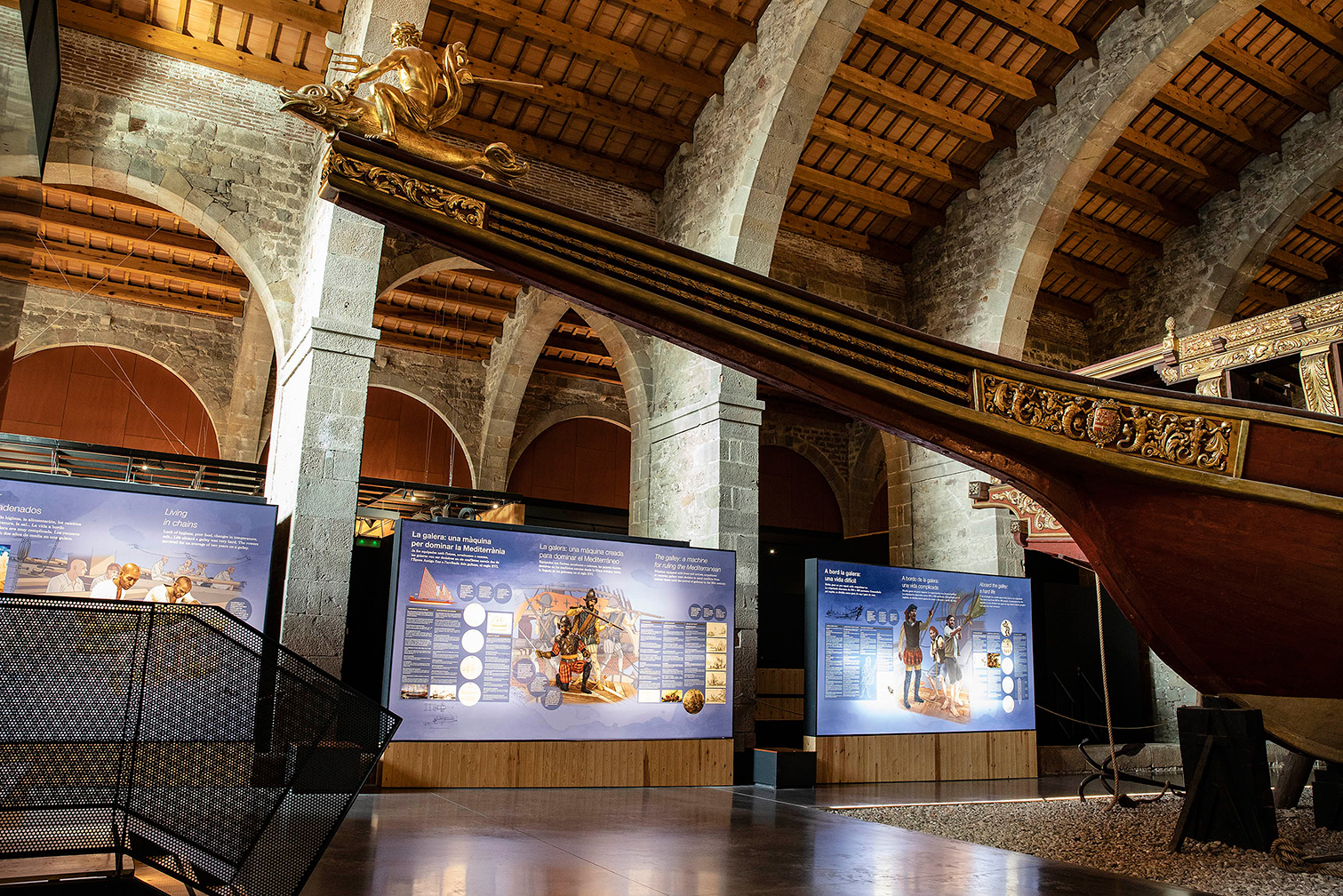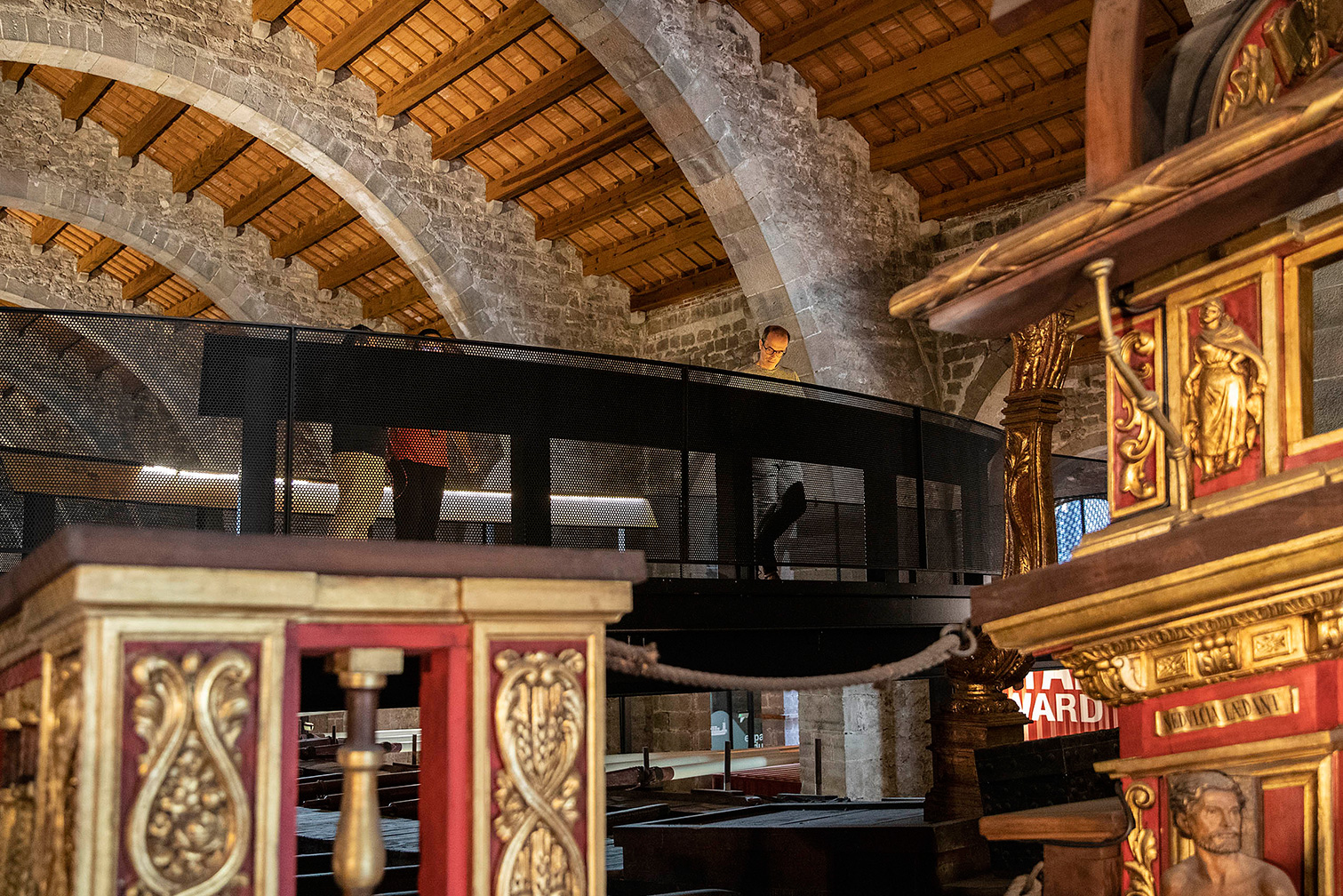"Dockyards and galleys" at the Barcelona Maritime Museum (MMB)
Client:
Barcelona Maritime Museum
Date:
2017
"Dockyards and galleys", a permanent exhibition at the Maritime Museum that explores the history of Barcelona's relationship with the sea
The Barcelona Maritime Museum has inaugurated a new permanent exhibition called “Drassanes i galeres” (Dockyards and galleys). This explores the history of Barcelona's relationship with the sea from the Catalan-Aragonese expansion throughout the Mediterranean and the connection between the building where the Museum is located and the Royal Dockyard and galleys that used to be built there. Grup Transversal has conceived and designed the museological project for this space covering around 1,000m2, including a series of modern resources such as holograms, virtual sets and also audiovisual and interactive installations.
The exhibition includes a set of a galley under construction, two new lookout points for the Galley and the Roman Mausoleum discovered during the latest archaeological excavations at the building (2010-2012). This project represents Transversal's entrance into the world of the most well-established Museums. And it has done so via a project applying state of the art museology, incorporating new languages and new technologies to generate experiences.
















